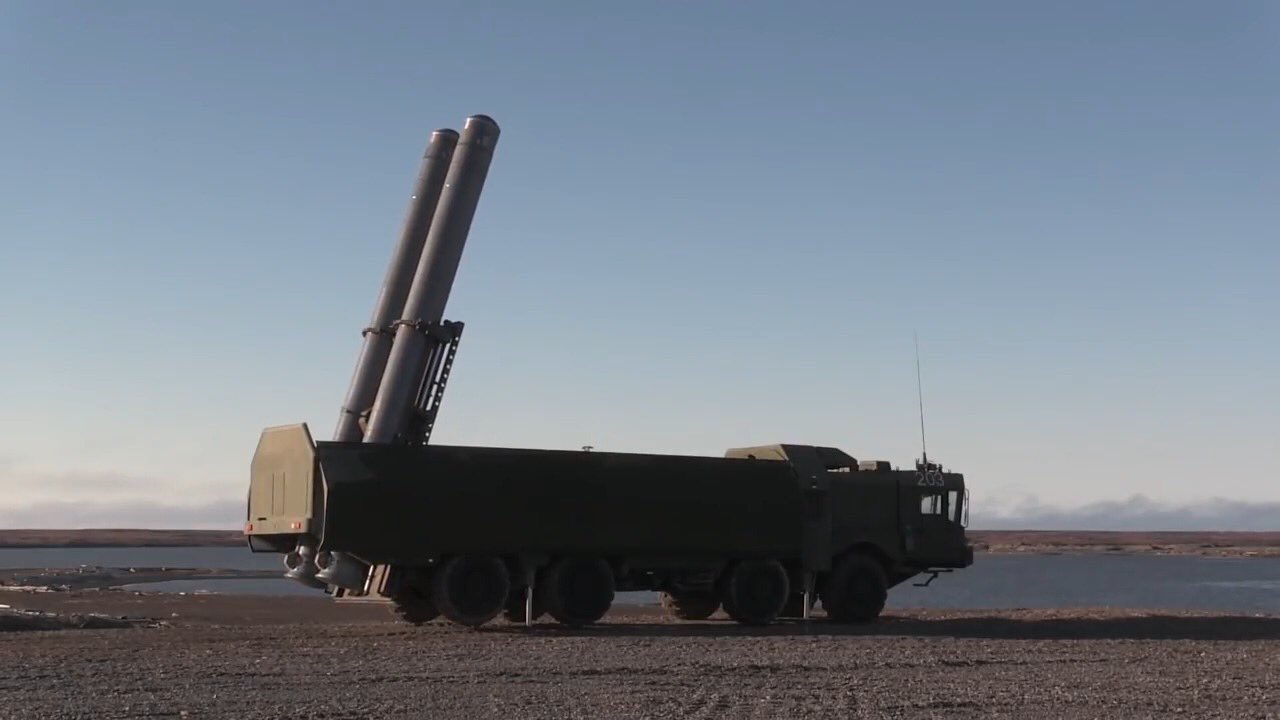As the Ukraine war enters its fourth week, Russia has started using advanced weaponry to break the resistance and morale of Zelensky’s forces. After hypersonic missile, Russian troops have used the Bastion-P anti-ship missile system in the war-torn country.
On 23 March, the Russian Ministry of Defense released a video purportedly showing the K-300P Bastion-P coastal defense missiles striking ground targets.
“The missiles fired from the Bastion systems destroyed a large arsenal of weapons and military equipment of the Ukrainian troops, including those received from Western countries,” the MOD claimed.
Moscow has already warned the West against supplying any armaments to Ukraine, claiming that such convoys might be regarded as “legitimate targets” by the Russian military. “We clearly said that any cargo moving into Ukrainian territory which we would believe is carrying weapons would be fair game,” Russian Foreign Minister Sergei Lavrov previously said in an interview with state-run RT.
A Russian defense ministry spokesman claimed that the anti-ship missile system Bastion was deployed to target Ukrainian military sites near the Black Sea port of Odesa.
This could indicate that the Bastion has been employed against Kyiv at least two times. Many open-source intelligence Twitter users indicate that the missiles were launched from a site in Crimea.
***UPDATE***
Geolocation of Bastion-P (P-800 Oniks / SS-N-26 STROBILE) supersonic missiles launched today against ground targets in Ukraine. 45.390380°, 32.493460°
Thx to others for quick info pic.twitter.com/oWMA7ILn87
— H I Sutton (@CovertShores) March 23, 2022
However, numerous doubts have arisen as to why Russia is currently deploying some of its most sophisticated weapons. It previously used Kh-47M2 Kinzhal hypersonic missiles to destroy an arms storage depot in Ukraine, making it the weapon’s first combat deployment.
The best explanation Western countries have is that Russia’s stockpile is depleted after shooting more than 1,100 missiles into Ukraine since February 24. “We think that could be one reason,” a senior US defense official told Politico. “They’re running out of material.” Another possibility suggested by the experts is that Moscow wanted to have leverage at the negotiating table with Ukraine.
The Bastion-P is a mobile coastal defense system and is designed to target high-value naval vessels off the coast. It is considered the last line of defense in Russian maritime strategy. In the past few years, Moscow has deployed this system in some of its most important maritime areas.
In December 2021, the Russian military stationed a K-300P Bastion-P mobile coastal defense missile system in the Kuril Islands, a chain of islands in the northwest Pacific Ocean. Japan and Russia have competing claims over this territory.
Following Russia’s annexation of Crimea in 2014, a military brigade equipped with Bastion missile systems was deployed in Sevastopol on the Crimean peninsula. Russia also deployed this system in the Arctic region to protect its territorial waters and huge Arctic coastline, as well as mineral and energy resources.
Operational Capabilities
The K-300P Bastion-P, also known as the SSC-5 Stooge, utilizes the supersonic P-800 Oniks anti-ship cruise missiles. These missiles are also deployed on warships and submarines and are designated SS-N-26 Strobile in the West. They are known as Yakhont when they are exported.
The missile is propelled by a solid-fuel rocket booster before being accelerated to a maximum speed of Mach 2.2 by a liquid-fuel ramjet motor. Its maximum range is more than 180 miles, which included a high-altitude cruise phase. The missile is also capable of flying a low-altitude trajectory, decreasing the range to roughly 75 miles.
A standard Bastion-P battery consists of one or two commands and control vehicles on KamAZ-4310 6×6 truck chassis, one support vehicle, four launcher vehicles each armed with two ready-to-fire missiles, and four loader vehicles.

One intriguing feature of this missile system is that its guidance system is said to be able to work in coordination with other missiles, allocating and classifying targets depending on their relevance before selecting an acceptable attack method. After the primary target is destroyed, the leftover missiles strike other ships, ensuring that no target is bombarded by more than one missile.
The missiles employed in the Bastion systems use an inertial navigation system (INS) supported by GLONASS for their early flight toward the target while shifting to active radar guidance as they approach it. GLONASS is a Russian satellite navigation system and provides an alternative to the American GPS.
The Bastion’s apparent use in Ukraine underlines the system’s additional land-attack potential. The Bastion system, as well as the export-optimized Yakhont missile, have long been marketed to foreign customers, with the Bastion-P already purchased by Syria, Indonesia, and Vietnam.
- Contact the author at ashishmichel@gmail.com
- Follow EurAsian Times on Google News




